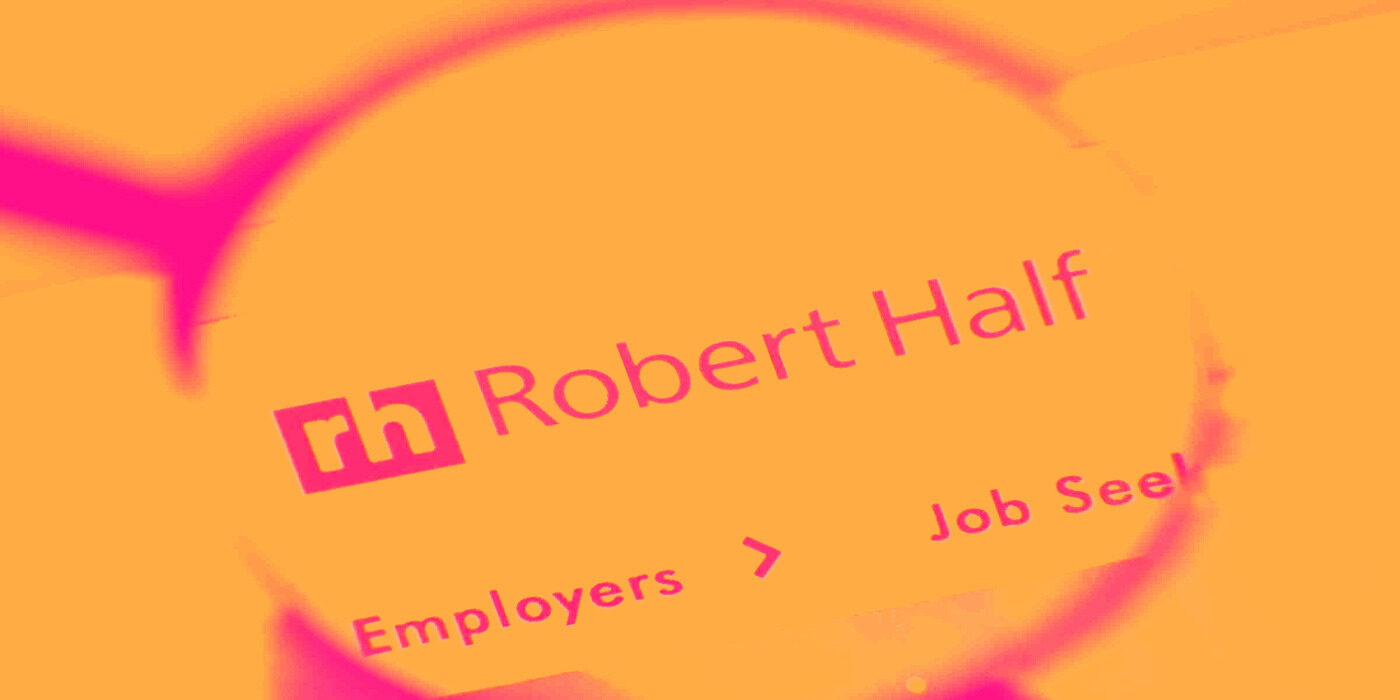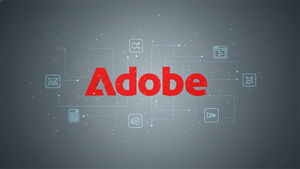
Specialized talent solutions company Robert Half (NYSE: RHI) beat Wall Street’s revenue expectations in Q2 CY2025, but sales fell by 7% year on year to $1.37 billion. Its non-GAAP profit of $0.41 per share was in line with analysts’ consensus estimates.
Is now the time to buy RHI? Find out in our full research report (it’s free).
Robert Half (RHI) Q2 CY2025 Highlights:
- Revenue: $1.37 billion vs analyst estimates of $1.35 billion (7% year-on-year decline, 1.1% beat)
- Adjusted EPS: $0.41 vs analyst estimates of $0.40 (in line)
- Adjusted EBITDA: $71.93 million vs analyst estimates of $73.1 million (5.3% margin, 1.6% miss)
- Operating Margin: 0.1%, down from 5.1% in the same quarter last year
- Market Capitalization: $4 billion
StockStory’s Take
Robert Half’s second quarter results reflected ongoing softness in staffing demand, as revenue declined year over year and operating margins compressed sharply. Management attributed these trends to persistent global economic uncertainty, which extended client and job seeker caution, elongated decision cycles, and subdued hiring activity. CEO M. Keith Waddell noted that revenue levels stabilized at lower levels by the end of the quarter and that “the tone of client conversations has definitely gotten better in the last few weeks.” Despite the challenging environment, the company maintained stable gross margin rates and continued to generate positive operating cash flow.
Looking to the coming quarters, management anticipates that recent improvements in client sentiment could set the stage for a gradual recovery in hiring and project demand, especially as business confidence rebounds and previously deferred initiatives are reprioritized. Waddell emphasized that the company’s investments in technology and full-time engagement professionals position it to capture share as market conditions improve, stating, “If the world gets more AI-centric, more technology-centric, we should be able to take share from our true competitors.” However, management acknowledged that hiring urgency has not fully returned to prior levels and that risks remain around broader economic trends.
Key Insights from Management’s Remarks
Management highlighted that Q2 performance was driven by weak demand in both staffing and consulting segments, but noted encouraging pipeline growth and stabilization in some markets.
- Talent solutions volume under pressure: The company’s core staffing operations saw a pronounced decline in activity, with clients maintaining a cautious approach to hiring and new projects. U.S. talent solutions revenue dropped as small- and medium-sized businesses hesitated on workforce expansion, reflecting ongoing macro uncertainty.
- Protiviti resilience and pipeline: While consulting subsidiary Protiviti delivered its fourth consecutive quarter of year-over-year growth, management noted that growth rates moderated due to lengthened project conversion cycles and smaller average project sizes. However, the pipeline of new opportunities notably increased in the last 30 days, suggesting potential for improved performance later in the year.
- Tech solutions outperforming: Within talent solutions, technology staffing continues to be the strongest area, driven by demand for modernization, ERP upgrades, security, and AI readiness initiatives. Waddell linked this to broader trends around digital transformation and AI preparation among clients.
- Margin compression driven by deleverage: Operating margins were pressured by lower revenues and limited operating leverage. SG&A (Selling, General & Administrative) costs as a share of revenue rose, particularly in talent solutions, as the company maintained staffing levels to preserve capacity for a potential upturn.
- AI and digital initiatives: Management reported that investments in proprietary AI-powered matching and lead scoring engines have yielded productivity gains and improved candidate quality. These tools are expected to underpin competitive positioning against smaller, less technologically advanced rivals as the market recovers.
Drivers of Future Performance
Robert Half’s outlook is shaped by stabilizing client sentiment, ongoing macroeconomic caution, and expectations for gradual improvement in hiring activity and consulting demand.
- Client confidence trends: Management observed that while the tone of client discussions has improved, hiring urgency remains subdued compared to earlier cycles. The company expects any recovery to be gradual, with business confidence and the pace of deferred project reactivation serving as key indicators.
- Operating leverage and margin dynamics: CFO Michael Buckley indicated that, following several quarters of negative operating leverage, cost actions have largely stabilized SG&A expenses. The company believes it now has the staffing capacity required to participate in a demand rebound without adding significant headcount, which could support margin recovery.
- Technology and AI investments: Management is confident that further adoption of digital tools and AI-driven processes will enhance both productivity and market share, particularly as clients increasingly seek specialized and technology-enabled staffing solutions. These capabilities are seen as differentiators in winning new business and defending against smaller competitors.
Catalysts in Upcoming Quarters
Looking ahead, our analyst team will monitor (1) whether stabilization in client sentiment translates into sustained improvements in staffing demand and new project starts, (2) the pace of margin recovery as cost discipline is maintained amid revenue headwinds, and (3) ongoing growth and conversion rates in Protiviti’s opportunity pipeline. Developments in technology adoption and AI-driven service delivery will also be important markers of competitive differentiation.
Robert Half currently trades at $40.14, down from $42.43 just before the earnings. Is there an opportunity in the stock?Find out in our full research report (it’s free).
Our Favorite Stocks Right Now
When Trump unveiled his aggressive tariff plan in April 2024, markets tanked as investors feared a full-blown trade war. But those who panicked and sold missed the subsequent rebound that’s already erased most losses.
Don’t let fear keep you from great opportunities and take a look at Top 5 Strong Momentum Stocks for this week. This is a curated list of our High Quality stocks that have generated a market-beating return of 183% over the last five years (as of March 31st 2025).
Stocks that made our list in 2020 include now familiar names such as Nvidia (+1,545% between March 2020 and March 2025) as well as under-the-radar businesses like the once-micro-cap company Kadant (+351% five-year return). Find your next big winner with StockStory today.
StockStory is growing and hiring equity analyst and marketing roles. Are you a 0 to 1 builder passionate about the markets and AI? See the open roles here.






